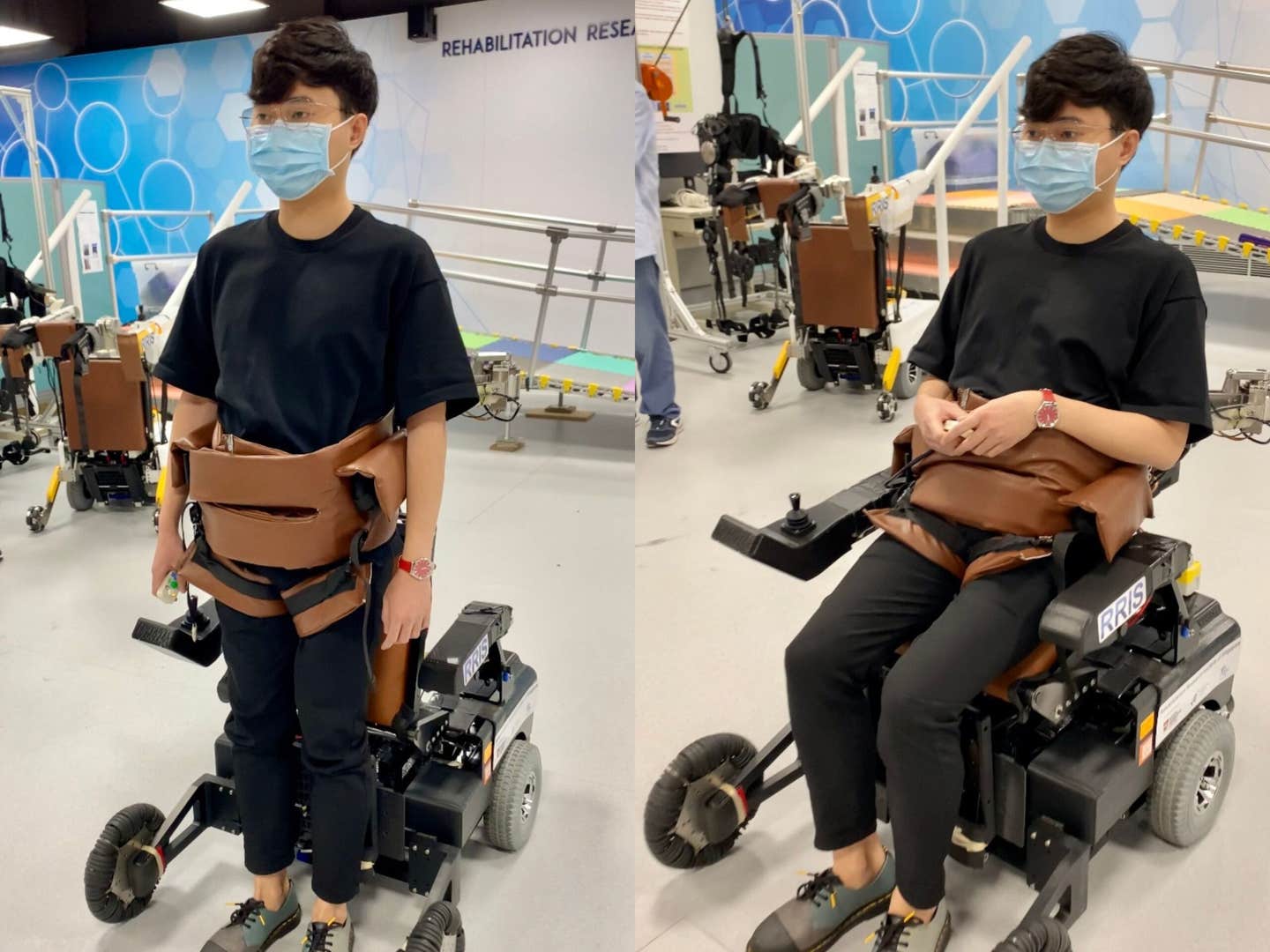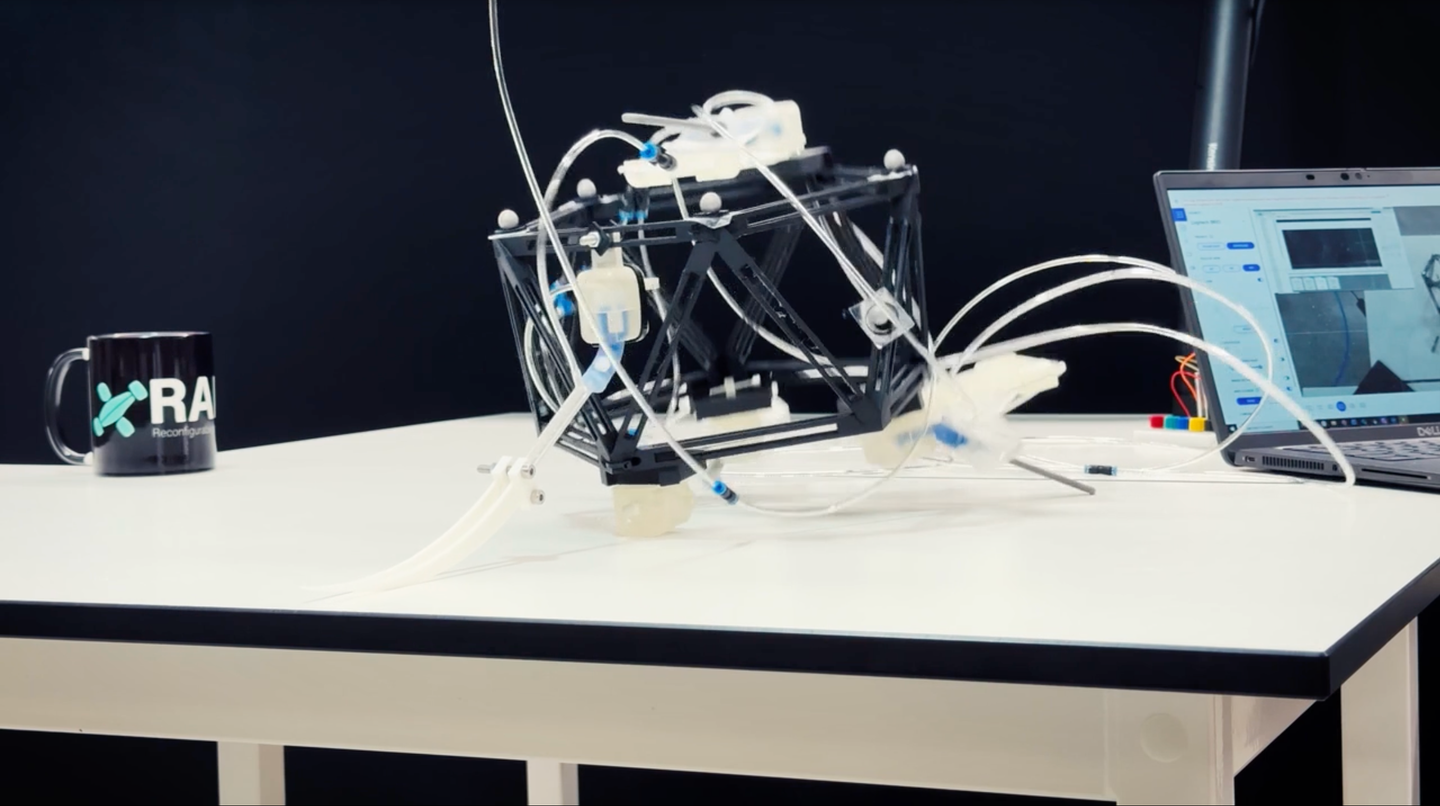Introducing “Mr. Bah” — the wearable robot preventing seniors from falling
Researchers have developed a wearable assistive robot that can detect and prevent a fall before it happens, reducing the risk of injury.

[Sept 12, 2022: Staff Writer, NTU Singapore]
Researchers have developed a wearable assistive robot that can detect and prevent a fall before it happens, reducing the user’s risk of sustaining injuries. (CREDIT: NTU Singapore)
Balance control probably has the greatest impact on independence in activities of daily living (ADL), because it is a fundamental motor skill and prerequisite to the maintenance of a myriad of postures and mobile activities.
A consequence of weakened balance control is the increased risk of falling. On average, generally healthy people aged 65 or over will fall 0.65 times per year and this rate doubles among people older than 75 years.
Researchers at the Rehabilitation Research Institute of Singapore (RRIS) at NTU Singapore and Tan Tock Seng Hospital have developed a wearable assistive robot that can detect and prevent a fall before it happens, reducing the user’s risk of sustaining injuries.
The development of the robot, which can also be used to aid patients’ rehabilitation from their injuries, was catalysed by the National Robotics Programme, a multi-agency national programme that looks at the end-to-end development of differentiating robotics enablers and solutions in Singapore, from funding R&D to facilitating partnerships for translation and adoption to maximise socio-economic impact.
Related Stories
Called the Mobile Robotic Balance Assistant or MRBA (pronounced ‘Mister-Bah’), the robot uses its inbuilt sensors to instantaneously detect a loss of balance and catches the user with its attached safety harness which is worn around the user’s hips.
The device would also help users who have difficulty in walking and balancing to stand up safely from a seated position, and to sit down safely from a standing position. It also uses a depth-sensing camera to observe the user’s movements, while its machine-learning algorithms estimate the balance state of the user in real time to better predict any future imbalances or falls.
The compliant robotic arm with intelligent control algorithm will only provide support and assistance to the patient when the center of mass of the body deviates beyond the predefined safety boundary, mimicking the helping hands of a parent when a toddler learns to walk.
Intended for use with minimal caregiver help in both institutional and home settings, it can assist people with limited or reduced mobility in day-to-day tasks, such as entering and exiting elevators, opening doors, getting dressed, performing simple kitchen chores and tasks such as watering plants.
Typical medical conditions that would warrant MRBA include:
neurological insults (e.g. head injury, stroke, spinal cord injury, Parkinson’s Disease, peripheral neuropathies, etc.)
musculoskeletal problems (e.g. chronic ankle sprains, chronic degenerative low back pain, scoliosis, amputation, etc.) and
vestibular deficits (e.g. benign paroxysmal positional vertigo).
There are three versions of the MRBA robot – one for people weighing up to 80 kg (176 lb), one for people weighing up to 120 kg (265 lb) and one that "supports more dextrous movements". (CREDIT: Nanyang Technological University)
The targeted group for this initial work is post stroke patients, although it can be extended to subjects with other neurological insults in the future.
"MRBA could also prove to be an invaluable resource for older adult users, and help promote independent living and aging," said the project leader, Assoc. Prof. Ang Wei Tech.
The innovation, which has been patented, has also received interest to be adopted by several Singapore home-care providers.
An everyday robotic assistant with a myriad of uses
MRBA comes in three models. The first model caters to users that weigh up to 80 kilograms, while the second assists those who weigh up to 120 kilograms. The third version, the Agile model, supports more dexterous movements.
In addition to assisting users in daily living, the robot can also support physiotherapy consultations by assisting those recovering from injuries to carry out key rehabilitation exercises, such as side stepping, balancing on a rocker board, and standing on one leg.
In providing such balance support, users feel more confident in going about their daily activities, including sports, such as bouncing and throwing a basketball, kicking a soccer ball, and even playing badminton.
The research team hopes to expand the study and recruit 71 more participants from day rehabilitation centers to further build the use case for the robot in home and community settings.
Note: Materials provided above by NTU Singapore. Content may be edited for style and length.
Like these kind of feel good stories? Get the Brighter Side of News' newsletter.



